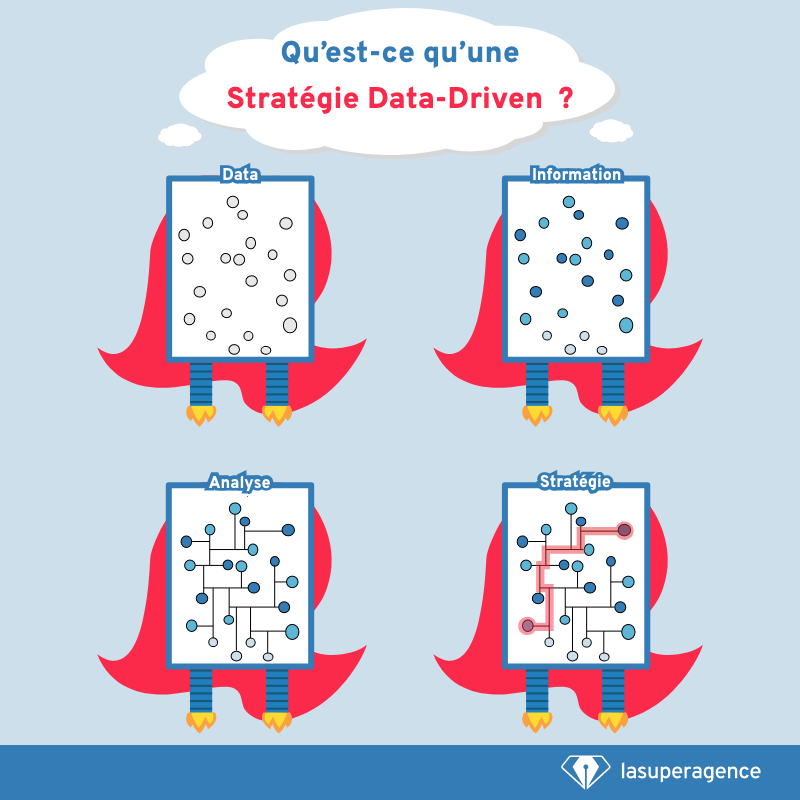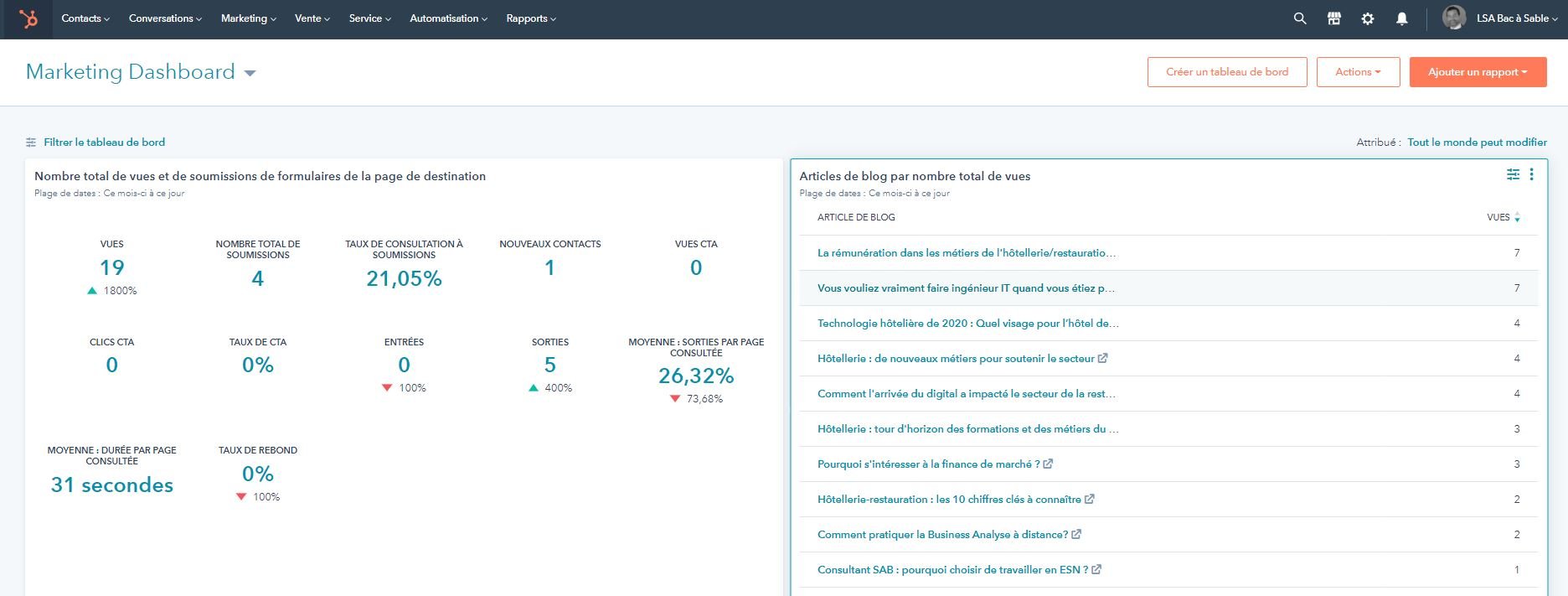At first glance, an employer brand is an intangible element, very difficult to evaluate quantitatively.
Yet, adopting a data-driven approach would certainly contribute to the success of your employer brand strategy. How do you achieve this?
Making tangible and intangible assets is becoming increasingly popular for companies, as they help to make confident decisions how and where to communicate so they can attract top talent.
With this in mind, more and more employer branding and HR professionals are using different avenues of data analysis to better understand their company's culture.
Why implement a Data-Driven approach?
With a Data-Driven approach, your employer-brand will allow you to attract talent more specific to your company's needs.
This approach will not only help you reduce your costs, it will also increase your retention rate and encourage top talent to better consider your job openings.
Without a clear perception of your employer brand's effective image, candidate engagement or career site conversion, your talent acquisition teams can't actually identify the best steps to improve their recruitment marketing.

What is a Data-Driven strategy?
How can your company leverage data to optimize recruitment?
How often do you rely solely on your gut when deciding where to spend your recruitment marketing budgets?
If the answer is "almost always," then yes, your company can most certainly benefit from using Data to boost your decision-making.
To use your resources wisely, you need to start measuring every point in the recruitment marketing process.
You also need to determine which part needs improvement and which sources bring the most qualified candidates to apply.
According to Beamery, only 31% of recruiters can prove the outcome of their recruitment marketing activities.
- If your company is among the 50% that already use a ATS , or if your department relies on an HRIS system, then you have a starting point for data collection.
- If you are in the other half, setting up some sort of HR database will be your first step. You'll need this database, for example using Hubspot, to collect the data you'll use later.
- What about social media? Do you use them to promote openings and interact with potential candidates?
- What about Google Analytics? Have you installed it on your career portal pages? Great! Now you can track where incoming candidates are coming from, giving you even more Data to work with.
How to use a Data-Driven approach
So by using data, you can make informed decisions for your communications strategy.
This will help you manage talent expectations and what you need to do to meet or exceed those expectations.
The internal perspective must meet the external so that you can form your value proposition to meet your positioning and strategic goals.
The following outlines four key steps to creating a Data-Driven employer brand that shares authentic insight into your company with the talent you most want to attract.
1 - Collect data internally
Start by conducting surveys, focus groups and other forms of qualitative research internally that you believe will be important conversation starters.
It's important to talk to employees of all sorts of different hierarchical levels and positions to establish your candidate persona.
It is through accurate research of your employees that you will get this kind of information.
Collecting data internally, will also allow you to make informed decisions about your recruitment needs.
To best collect your internal data, we advise you to' use the SMART goals rubric to bring structure and traceability to your goals.
Once your internal employer brand perception is well understood, we recommend looking at your external employer brand.
 Make your Employer Brand shine with a Data-Driven approach
Make your Employer Brand shine with a Data-Driven approach
2 - Collect data externally
To complement your internal data, it is critical to understand the external perception of your employer brand.
With this in mind, Link Humans designed the Employer Brand Index to look at all publicly available data online such as on Glassdoor, Fairygodboss, or even Twitter.
The advantage of this index is that it is areal time saver in collecting external data. The latter can be very complex given the amount of online data to manage.
Once you have collected the Data both internally and externally, you will be able to make much more informed decisions because your decision will be more informed. You are now ready to begin your analysis.
3 - Analyze the data set
Once you've collected all this pretty Data, you can start to analyze what it all means for your employer brand.
With the mass of data readily available to you, it's essential to know which metrics you really care about to avoid getting lost in the weeds. We recommend starting small, with a focus on defining a key metric.
The first step is to take both a qualitative and quantitative approach.
At the Super Agency we have designed 5 rules for improving your employer brand and help you categorize and analyze all the vital aspects of your employer brand.
It's important to know what data to analyze.
Start by asking yourself what content people interact with the most.
Then focus on analyzing your various social media accounts. Which of your posts has the highest level of engagement?
 Individuals don't share facts, they share emotions.
Individuals don't share facts, they share emotions.
Although it sounds simple, this is valuable information that you can use to discover the facets of your company and culture that candidates find most relevant and appealing.
You should also consult your career site analytics. What information can you gather here? Traffic, conversion rate, source of visits, etc.
For example, if you notice that most of the clicks on your application page occur after watching your company's introductory video, that's a strong indicator that you should be leveraging more video content.
4 - Measure new data
When it comes to employer branding, measuring its impact can be difficult to understand. But, in reality, there are many indicators to see if your efforts are working!
First, there are the more traditional metrics.
For example, has your application rate increased? Are you getting more visitors to your Careers site? Are those visitors converting into candidates? Are you getting more engagement on your social media accounts?
These are all great indicators about the resonance of your employer brand.
However, your current employees are also a great indicator of whether your efforts are paying off.
While these aren't necessarily data points you'll see recorded in a spreadsheet, feeling like employees are invested in what you're doing and excited to share that message with others speaks volumes.

Use Hubspot to acquire new recruitment data
Nevertheless, there are many measurement tools, such as HubSpot that allow you to centralize your Marketing data on a single interface while having the tools to make the best decisions.
So it's critical to take your employer brand to the next level!
5 - Improve your candidate experience with Data-Driven
Once you're clear on goals and have started to look at the data to see what other areas need attention : the experience candidate.
The study by Textkernel, shows that 92% of companies don't collect feedback from candidates !
While it's easy to lose candidates' trust, unfortunately it's not so easy to regain it.
To do this, all you need to do is implement a real content strategy, not only to inform them upstream of the recruitment process (Inbound Recruiting) but also during and after the interview, in a phase called Candidate Nurturing.
Your career site can be your best ally in improving your candidate experience.
6 - Tailor your budget for better ROI
Talent acquisition is loaded with data. The key is knowing how to implement it to get the results you need.
Experimentation, analysis, and confidence in the numbers are all essential to success.
Because, let's face it, the bottom line is return on investment. Data can show you where the smart investments are and where the underperforming ones are.
Transfer your money the right way and watch your ROI improve instantly.
Here's how to build a Data-Driven employer brand that puts you ahead of the curve to attract the talent you need most.









